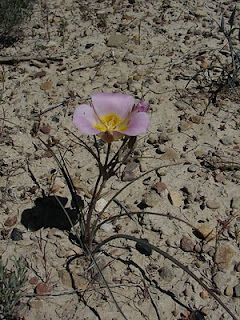These seed pods formed very quickly and were a dead giveaway. This plant is growing in a sunnier location than the ones I photographed earlier this spring. I was taking a stroll near the vegetable garden when I noticed this mass of flat seed pods. And I quickly checked the plants near the brick patio. Yep! They had the same flat seed pods.
I recognized it as money plant. A quick Google search and I found the name: Lunaria annua.
 Since I had seen many of the purple flowers growing in the woods near my home, I decided to see if I could locate a plant when I went for my morning run. Near the road I found several plants that still had fading flowers and pulled one up. Unlike the plants growing in my garden, the roadside plants had long, skinny seed pods. As shown in this photo. These plants also have longer, thinner leaves that barely wrap the stem at all. This plant actually is the invasive Hesperis matronalis. When Dame's Rocket and Money Plant are in bloom it is difficult to tell them apart. The flower structure is identical, so it was no help. The best clue before the seed pods form will be the leaves. Money plant has wider leaves that clasp the stems. Dame's rocket has thinner, smaller leaves; much like phlox. The trouble in identifying my money plants came from not plucking a plant sooner so I could compare.
Since I had seen many of the purple flowers growing in the woods near my home, I decided to see if I could locate a plant when I went for my morning run. Near the road I found several plants that still had fading flowers and pulled one up. Unlike the plants growing in my garden, the roadside plants had long, skinny seed pods. As shown in this photo. These plants also have longer, thinner leaves that barely wrap the stem at all. This plant actually is the invasive Hesperis matronalis. When Dame's Rocket and Money Plant are in bloom it is difficult to tell them apart. The flower structure is identical, so it was no help. The best clue before the seed pods form will be the leaves. Money plant has wider leaves that clasp the stems. Dame's rocket has thinner, smaller leaves; much like phlox. The trouble in identifying my money plants came from not plucking a plant sooner so I could compare.I remember thinking the leaves looked like Brunnera last fall. They were large and deeply veined; nothing like the leaves on the flower stems. I plan to cut most of the stems before the seed pods dry; leaving a few to start new plants next year. I'll keep an eye on the plant that's left to see if the leaves continue to broaden or if this plant is a biennial and what I witnessed last fall was the first year plant.
I'm glad I found out this wasn't an invasive before I pulled them all up. Money plant is really pretty!
















